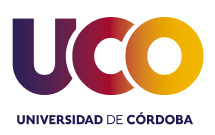Improvement of preventive actions to emerging LAGoviruses in the MEDiterranean basin: development and optimisation of methodologies for pathogen detection and control (PRIMA-S2-2018-PCI2019-103698).
The traditional epidemiologic triad model holds that clinical infectious diseases result from the interaction of the pathogen, the host and the environment. The initial impact in the 1980s of rabbit haemorrhagic disease (RHD) on wild and domestic rabbits slowly abated over time in rabbitries as a consequence of the use of efficient vaccination campaigns and other control measures. However, in 2010, a new genotype named RHDV2 or RHDVb, and more recently GI.2, emerged in France with an unknown origin, but linked to the European (Mediterranean) area. This new genotype that possibly represents a new serotype, was detected both in wild and farm animals, including rabbits vaccinated against RHDV GI.1 (former G1-G6) or naturally immunised, and showed the relevant impact of this disease, particularly on the fragile equilibrium of the Mediterranean ecosystem. Indeed, RHD is still one of the most (if not the most) devastating diseases of rabbits, with high mortality rates occurring within a few days and with an outstanding ability of transmission at long distance.
The main objective of this project is to increase interdisciplinary scientific and technical knowledge on the epidemiological characteristics of RHD and its aetiological agent, the rabbit haemorrhagic disease virus (RHDV). This will contribute to develop effective preventive actions, capable to reduce the socio-economic impact of future outbreaks or of the emergence of new genotypes of unknown origin. This is especially relevant for African countries of the Mediterranean basin where rabbits have been promoted for poverty reduction programmes due to the “low investment and early benefits, and subsistence on renewable resources for feeding, housing and general management”.
General objectives
The following objectives were set:
- O1. Epidemiology and surveillance.
- O2. Optimisation and validation of technical tools for better prevention and control of RHDV.
- O3. Analyses of RHDV-host interactions; induction and regulation of immune responses.
- O4. Biosecurity measures, control and prevention strategy.
- O5. Mediterranean networking activities and technology transfer.
Role of the University of Cordoba
- WP1. T1.1: collection of rabbit/hare samples, mainly liver, spleen and duodenum samples, and when possible, blood, from leporids killed through regular hunting season from several different geographical areas from Spain. Additionally, samples will also be collected from deceased leporids found by the network of collaborators (e.g. WWF, hunting federations, farmers, etc.).
- WP1. T1.2: analysis of the epidemiological status and its potential correlation with different biotic and abiotic variables obtained from samples collected and variables measured during the implementation of Task 1.1.
- WP2. T2.1: will test diagnostic tools developed in this task in samples collected during rabbit control operations carried out in game emergency zones, to assess its rapid and sensitive diagnosis.
- WP4. T4.1: participation on the review of the intervention plans and on the writing of a Manual and implementation of specific intervention plans to prevent and/or control occurring outbreaks, particularly in cases affecting African countries.
- WP4. T4.2: will evaluate the efficiency of defensive and offensive measures; will contribute for the search of passive vectors of the disease.
- WP5. T5.1: participation to the consortium annual meetings and co-organisation of one of them; presentation of the results in at least one international and one national congress; supervision of a PhD dissertation based on the analysis of data collected along the project.
- WP5. T5.2: co-organisation of workshop 2 “Biosecurity measures against RHDV”, in order to communicate scientific knowledge gathered during the project to transfer best practices to reduce the impact of RHD in wild rabbit populations and rabbitries.
- WP6. T6.1: will participate in the development of the Data Management Plan.
- WP6. T6.2: will contribute to the elaboration of the “Consortium Agreement”.
- WP6. T6.3: will contribute with data and protocols produced within LAGMED for the internal database.
Investigador principal: Carlos Rouco Zufiaurre
E-mail: crouco@uco.es
Página web del proyecto: https://lagmed.eu/

